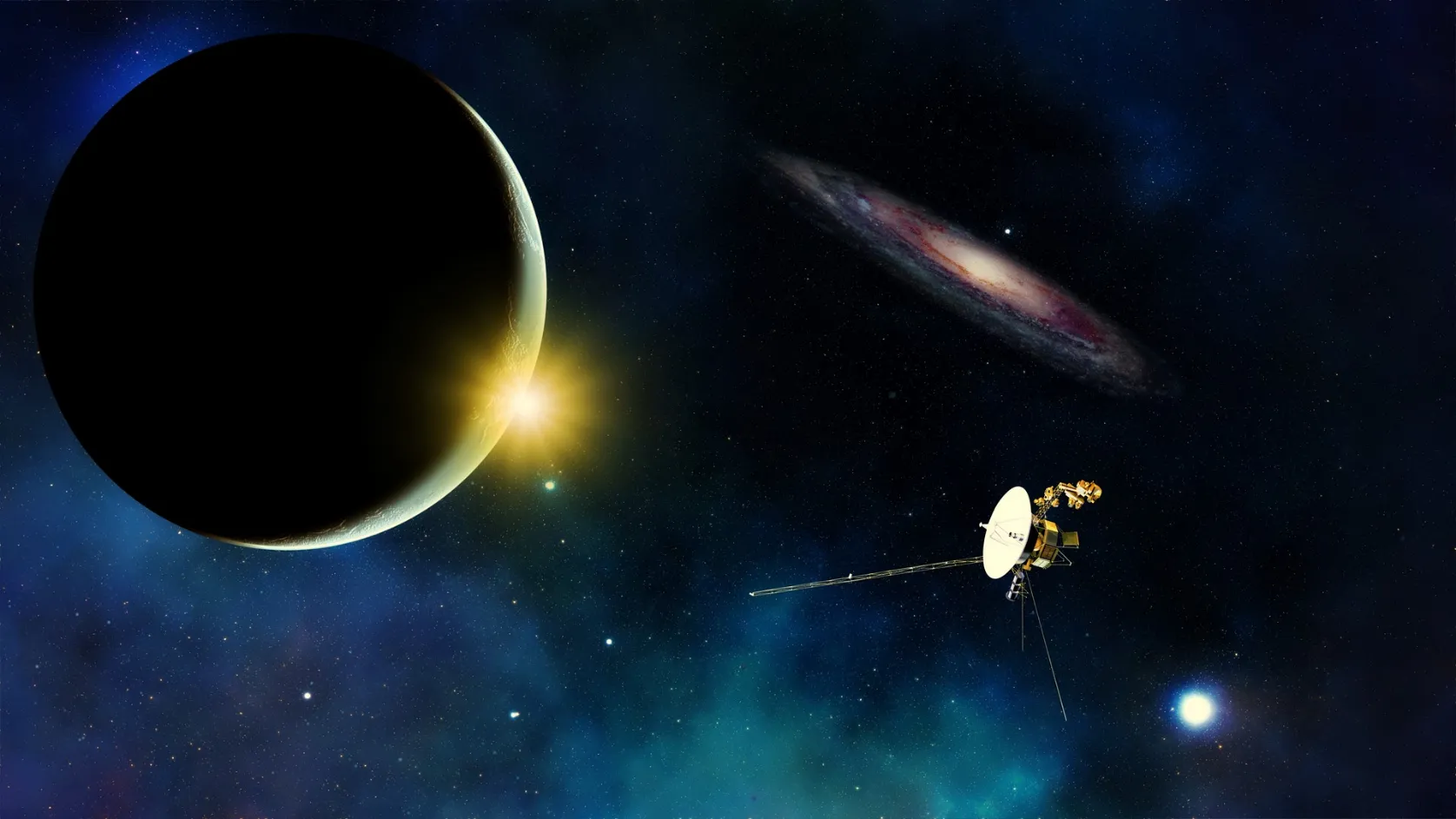
Space enthusiasts! Let’s explore TOI-700, a star located 100 light-years away. It’s a smaller, cooler M-dwarf star, not the brightest, but certainly exciting due to its planetary companions. Some of these planets, TOI-700’s distant cousins, reside in the “habitable zone,” where liquid water could potentially exist, making them ideal places to hunt for life. However, remember, just being in this cosmic Goldilocks zone isn’t enough for life to thrive; a planet’s atmosphere and composition are like cosmic recipes – each ingredient must be just right.
Table of Contents
The Star TOI-700
TOI-700 is a small, cool M-dwarf star located about 100 light-years away from Earth in the southern constellation Dorado. It is roughly 40% of the Sun’s mass and size and about half its surface temperature. The star appears in 11 of the 13 sectors TESS observed during the mission’s first year, and scientists caught multiple transits by its three planets.
Specifications of TOI-700:
Mass: 0.48 M☉
Radius: 0.39 R☉
Temperature: 3915 K (3642 °C)
Luminosity: 0.053 L☉
Age: 4.2 billion years
Metallicity: 0.3 [Fe/H]
M-dwarf stars are the most common type of star in the universe, but they are also very faint and difficult to study. TOI-700 is one of the brightest M-dwarf stars known, which makes it a prime target for astronomers.
The discovery of TOI-700 and its four planets (so far discovered) is an exciting development in the search for life beyond Earth. The planets are all relatively small and close-in to the star, which makes them good candidates for future study with telescopes like the James Webb Space Telescope. So, let’s learn about TOI-700 Planets:
What Are the TOI-700 Planets?

So, TOI-700 planets, what’s the deal? These are four planets that are twirling around a star named TOI-700. But here’s the kicker – TOI-700 isn’t just around the corner; it’s like 100 light-years away. These planets are the distant cousins of Earth.
As we mentioned before there are four TOI-700 planets, TOI-700 b, c, d, and e. Among these planets, two of them, TOI-700 d and TOI-700 e, are the ones we’re interested in. Why? Because they’re in the “potentially habitable zone.” What does that mean? Well, it’s like a cosmic sweet spot where the temperature might be just right for water to exist on their surfaces. And water is a big deal because it’s kinda essential for life as we know it.
The Habitable Zone: Not a Guarantee
The habitable zone, or the “Goldilocks zone,” as some like to call it, is indeed a fascinating concept. It’s like the cosmic real estate where temperatures are just right for liquid water, a crucial ingredient for life. But, here’s where it gets tricky.
Imagine you’re baking a cake, and the recipe says the oven should be set at 350°F (175°C). That’s your habitable zone. But does that mean your cake will turn out perfect? Not necessarily. You’ve got to make sure you’ve got the right ingredients and mix them just right. In the case of planets, the “ingredients” are their atmosphere and composition.
Think about it – the atmosphere plays a big role. It’s like the frosting on our cosmic cake. Earth’s atmosphere has the right amount of oxygen and nitrogen, which makes it perfect for us to breathe. On a planet like Venus, the atmosphere is a scorching mix of carbon dioxide and sulfuric acid. Not great for cake baking or, in this case, life.
Then there’s the planet’s composition. Is it rocky like Earth or gassy like Jupiter? Some ingredients might be fine, but others can ruin the recipe for life. If the planet’s surface is too hot, too cold, or just plain weird, life as we know it might not stand a chance.
So, while the habitable zone is a great place to start the cosmic search for life-friendly planets, it’s not the only thing we need to check. Scientists will be like cosmic chefs, exploring these planets to make sure they’ve got the right “ingredients” to support life. If everything lines up, it could be time to celebrate – or maybe even bake a cosmic cake!
The Big Plan: Investigating TOI-700 d and TOI-700 e

Here’s where the cool part comes in. Scientists are getting ready to put on their cosmic detective hats and study TOI-700 d and TOI-700 e. They’re bringing out the fancy telescopes, like the James Webb Space Telescope, to check out these planets. They want to know what their atmospheres are like and what they’re made of. This is how we’ll find out if they’re a good home for life.
What’s Next?
Now, what does all this mean for us in space? If, and that’s a big “if,” these planets turn out to be good for life, it would be an epic discovery. It’s like finding a new home for all of us among the stars. We’re talking about sending our fancy space machines to explore these planets, maybe even meet alien neighbors.
But don’t pop the space champagne just yet. We’ve got a long journey ahead before we’re packing our bags for an interstellar vacation. Nevertheless, this discovery is a huge leap forward in our space adventures, and it’s a thrilling time to be part of this cosmic journey.
Conclusion: The Cosmic Future: Let’s Keep Dreaming

TOI-700’s planets are out of reach for now, but the discovery kindles our cosmic curiosity. While we’re not yet ready for alien meet-and-greets, every new celestial revelation fuels our fascination. Space exploration is an ongoing journey, and we’re just beginning. Our universe is brimming with enigmas waiting to be uncovered. So, fellow cosmic travelers, keep dreaming and exploring because our cosmic adventure has only just begun.








